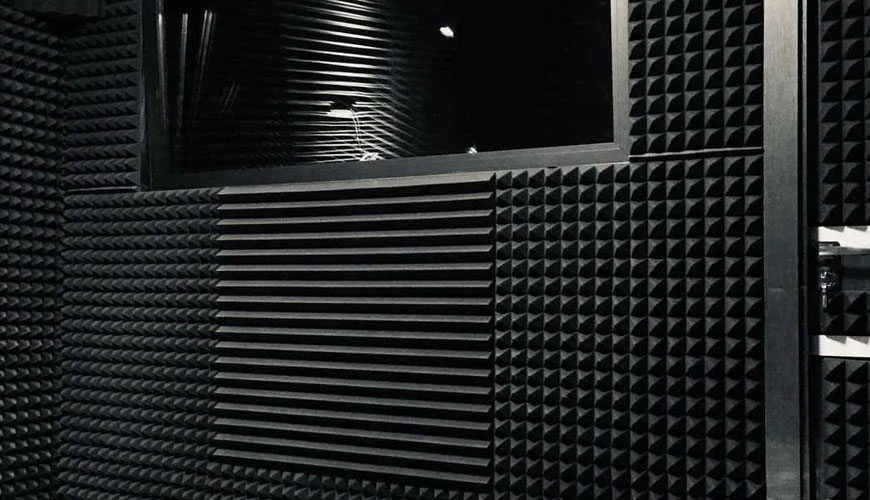

EUROLAB, with its state-of-the-art accredited laboratories and expert team, provides precise and fast testing services within the scope of EN ISO 140-3 testing. This part of EN ISO 140 covers a laboratory method for measuring the airborne sound insulation of building elements such as walls, floors, doors, windows, facade elements and facades, except those classified as small structural elements.

The results obtained can be used to design building elements with appropriate acoustic properties, to compare the sound insulation properties of building elements and to classify these elements according to their sound insulation properties.
Measurements are carried out in laboratory test facilities where noise transmission on the side roads is suppressed. Therefore, the results of measurements made in accordance with this part of ISO 140 will not be applied directly in the field without taking into account other factors affecting sound insulation, in particular lateral transmission and loss factor.
The sound transmission of a sample may depend on the temperature and relative humidity in the test chambers during testing or during curing or conditioning of the test sample.
A smaller size is allowed if the wavelength of the free bending waves of the lowest frequency considered is less than half the minimum size of the sample. However, the smaller the sample, the more sensitive the results will be to edge constraint conditions and local variations in sound fields.
Install the test chamber preferably as closely as possible to the actual construction, with careful simulation of normal connections and sealing conditions at the joints in the surrounding and inside the chamber. Installation conditions should be specified in the test report.
The test specimen should be tested in the same way as a chamber. If the test specimen is smaller than the test opening, a special chamber with sufficiently high sound insulation must be made in the test aperture and the specimen must be placed in this chamber. Sound transmitted from this chamber and any other indirect means should be insignificant compared to sound transmitted from the test sample. Otherwise, the test results should be corrected.
If the test specimen is intended to be easily opened, it should be set up so that it can be opened and closed normally for testing. It should be turned on and off at least five times just before the test.
EUROLAB assists manufacturers with EN ISO 140-3 test compliance. Our test experts, with their professional working mission and principles, provide you, our manufacturers and suppliers, the best service and controlled testing process in our laboratories. Thanks to these services, businesses receive more effective, high-performance and quality testing services and provide safe, fast and uninterrupted service to their customers.
To get an appointment, to get more detailed information or to request an evaluation, you can ask us to fill in our form and reach you.